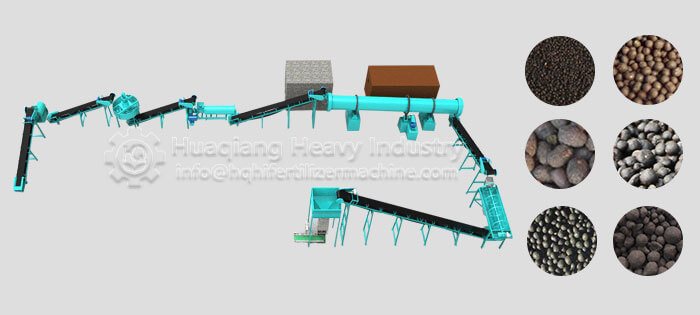
In organic fertilizer production lines, the fermentation process often releases ammonia, harming air quality and causing nutrient loss. Here are practical ways to reduce ammonia emissions while improving environmental and economic outcomes:
1. Optimize Fermentation Conditions
Temperature and Moisture Control: Maintain temperatures between 50-65°C and moisture at 50-60% to limit ammonia release. Use sensors to monitor conditions in real-time.
Adjust Ventilation: At the beginning of fermentation in the organic fertilizer production line, start with the minimum ventilation volume, and then gradually increase the ventilation volume. This prevents excess ammonia from escaping.
2. Adjust Material Mix
Balance Carbon-Nitrogen Ratio: Keep the C/N ratio at 25-35 by adding carbon-rich materials like straw. This reduces excess nitrogen converting into ammonia.
Use Ammonia Inhibitors: Add acidic substances (such as phosphoric or sulfuric acid) to bind ammonia within the mixture.

3. Upgrade Equipment
Sealed Fermenters: Use airtight equipment with ammonia recovery systems to capture and reuse ammonia for nitrogen-based products.
Semi-Permeable Covers: Covering piles with special membranes can cut odor by 90-97%, blocking dust and pathogens while letting gases like CO2 escape.
4. Apply Biological Solutions
Microbial Additives: Introduce odor-reducing bacteria during fermentation to break down ammonia, achieving 30-50% odor reduction.
EM Bacteria Sprays: Spraying EM (Effective Microorganisms) in workspaces lowers ammonia levels and improves air quality.
Through the comprehensive application of the above methods, the ammonia emission in the fermentation process of the organic fertilizer production line can be effectively reduced, the quality of organic fertilizer can be improved, and the green and environmentally friendly production goals can be achieved.